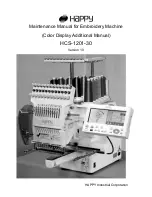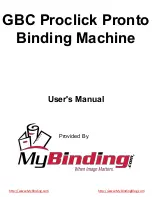
|
Handbook
163
ITU-T Test Document 1.
Also called the Slerexe (“Slehr-
rehks”) letter; sometimes erroneously called ITU-T Test Chart
1. An ITU-T standard document with a known black density
which fax makers often use in testing, and subsequently
publicizing, the transmission speeds of their fax machines.
ITU-T V.29 and V.27 ter.
A standard set of communication
procedures allowing fax machines to talk to all other units
adhering to those standards.
LCD.
Liquid crystal display. Used on your fax machine to
display information.
Leased line.
See Private line.
Load number.
A number assigned to telecommunications
equipment used in Canada; designed to help prevent
overloading on a telephone circuit. See also Ringer
equivalence number.
Location ID.
See Station ID.
lpi.
Lines per inch. The way fax image resolution is
measured. (For example, see Normal resolution.)
Mailbox.
A password protected (secure) area of memory
setup by a user for sending and receiving confidential faxes.
Also referred to as confidential mailbox and personal
mailbox.
MH.
Modified Huffman, the standard ITU-T Group 3 data
compression method. A one-dimensional coding scheme that
compresses data in a horizontal direction only. A feature of
your fax machine, MH assures transmissions faster than one
page per minute when communicating with other Group 3
units, regardless of manufacturer. See also MSE, SMSE.
Modem.
Modulator-demodulator. A device that converts
digital data, like information from a fax machine, into an
analog signal for transmission over ordinary (analog)
telephone lines. A modem is included in a fax machine and
allows it to be connected directly to a PSTN telephone line.
Monitor.
A speaker in your fax machine that allows you to
hear the dialing process. This is not a speakerphone, because
it has no microphone for speaking to the person being called;
for regular two-way voice communication, one must use the
handset. See also On-hook dialing.
MSE, SMSE.
Proprietary data compression methods, which
allow your fax machine to transmit more quickly when
communicating with another fax machine. See also MH.














































